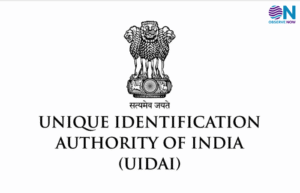PSU Bank Stocks Surge as Government Pushes for Subsidiary Listings to Unlock Value

Public sector bank stocks surged sharply on June 30, driven by a fresh directive from the Finance Ministry encouraging institutions like SBI and Indian Union Bank to list subsidiaries and joint ventures to unlock value and boost transparency. The move propelled the Nifty PSU Bank index higher, with SBI, Indian Bank, Indian Overseas Bank, Bank of Maharashtra, Union Bank, and others rising between 3% and 4% on the National Stock Exchange.
Market reaction was immediate. Shares of SBI and Union Bank led the momentum, each gaining up to 4%, while mid-tier lenders such as Canara and Central Bank rose more modestly. The broader PSU Bank index outpaced the Nifty 50 and even the Nifty Financial Services subset, which saw flat or slightly negative returns . Investors welcomed the news as a long-term value catalyst, signaling a shift toward strategic restructuring and hidden asset monetization.
Analysts at YES Securities highlighted that public sector banks are well-positioned to benefit from the initiative. Their robust margins—buoyed by reserves tied to MCLR-linked lending—and the government’s push for capital recycling through IPOs create favourable conditions for sustained profitability. Historically, PSU banks have enjoyed upside during periods of clarity in capital and asset reallocation, with expanding liquidity and low non-performing assets adding to tailwinds.
The policy backdrop is significant. The Finance Ministry has identified around 15 PSBs with viable subsidiaries ripe for stock market listings among them SBI, which is reportedly exploring options for unlisted arms to enter public markets. Capital infusion via IPOs can strengthen balance sheets, reduce state ownership, and improve corporate governance standards—moves that tend to resonate well with equity investors over time.
This announcement builds on a broader narrative of public bank resurgence. Strong Q4 earnings, stable asset quality, and improved fee and treasury incomes have all reinforced confidence in PSU profitability even as credit growth remains cautious . Broader trends—including India’s easing liquidity landscape, declining bond yields, and early-stage rate cuts by the Reserve Bank—make fixed-income portfolios within PSU banks more attractive, helping sustain margins.
Despite positive indicators, observers note the gains may be short-lived if policy implementation falters. Listing complex subsidiaries involves regulatory hurdles, valuation clarity, and execution risk. Moreover, with systemic credit growth moderate and competition from private banks on the rise, PSU lenders will need to deploy IPO proceeds wisely to maintain momentum.
Looking ahead, market participants expect PSU banking stocks to remain in focus, especially as definitive plans emerge for specific listings. With HDFC Institutional Equities forecasting around 15% CAGR in core earnings for PSU banks between FY25–27—driven by disciplined lending, digitalisation, and asset-quality upkeep—the sector appears well primed to recover under renewed market impetus.
















